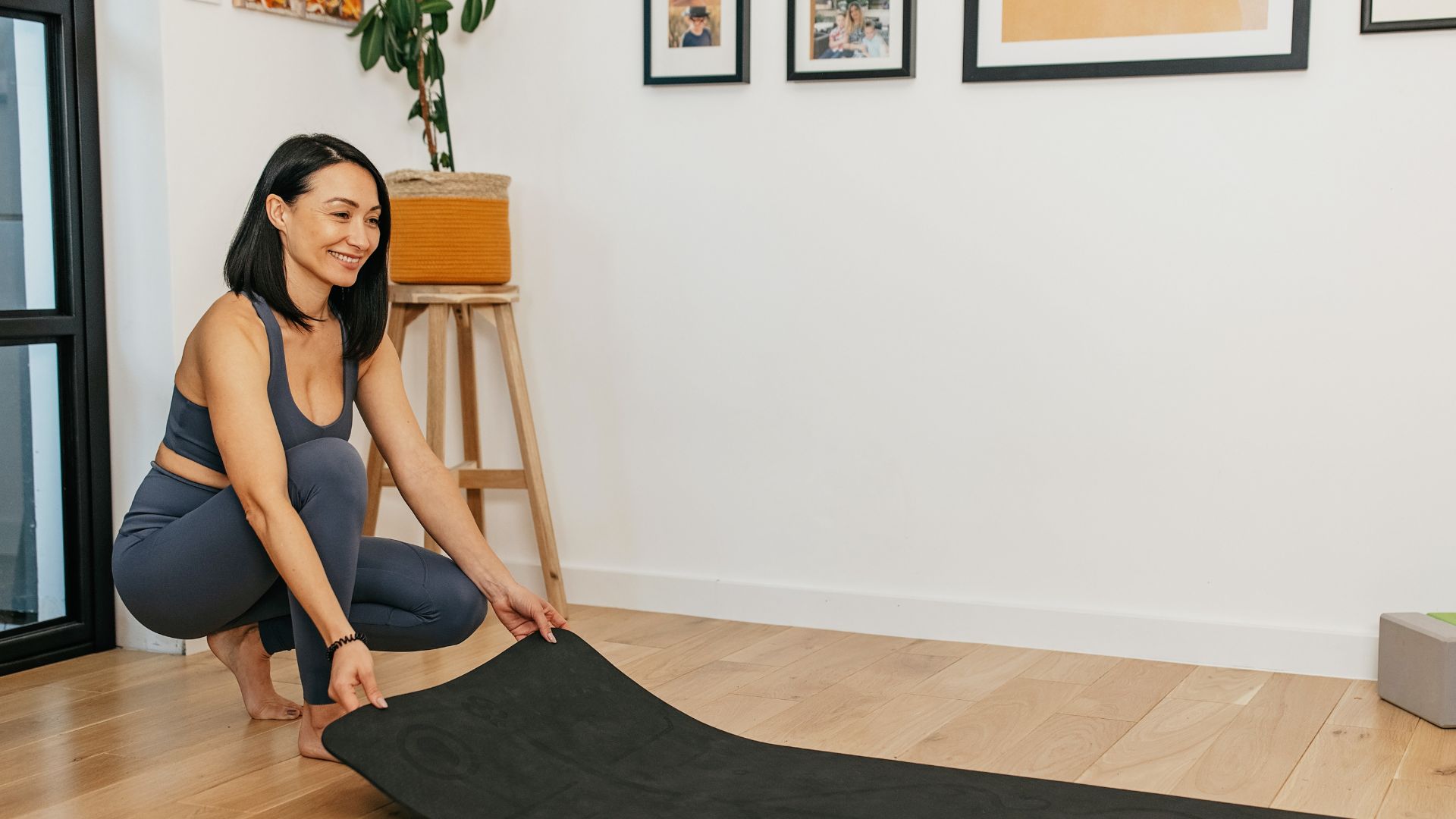
The bird dog exercise is hugely effective at strengthening your core, glutes, and back. Trust me, I've tried it myself, swapping out my regular plank for this unique exercise.
Over the years, I've tried to get better at the plank in my beginner Pilates classes and at home. It's just not the core exercise for me. I can hold the position for about a minute before everything starts shaking, and I feel sweat on my forehead. Even with practice, it still feels like a torturous exercise.
When I discovered there was another move I could try, which wouldn’t cause me so much discomfort but would still improve my strength and stability, I knew I needed to find out more about it.
What is the bird dog exercise?
The bird dog exercise goes by a few different names. Sam Deville, a Pilates instructor and founder of the dynamic online platform Sam Deville Pilates, says she calls it ‘swimming’ in her classes. It’s a “brilliant move for strengthening the posterior chain (muscles on the back of your body)," she says. “It looks simple, but when done with proper form, it fires up everything from your glutes and hamstrings to your core and shoulders."
If you're familiar with dead bugs, then you'll already be halfway to a bird dog exercise. It's very similar, but you do it on all fours rather than on your back.
“Your core should be active, spine in a neutral position (no sagging or rounding), and hips level, no rocking or twisting," says Deville. From here, you extend one arm forward and the opposite leg back, switching to cover both sides of the body.
The bird dog is one exercise I found took a bit of concentration and breathwork to do properly. I was focused on staying balanced while also trying to stop myself from leaning to one side or twisting my upper body.
Sign up to our free daily email for the latest royal and entertainment news, interesting opinion, expert advice on styling and beauty trends, and no-nonsense guides to the health and wellness questions you want answered.
It felt like a lovely way to stretch out and unwind at the end of the day after sitting hunched over my computer, as well as a good way to start the day and get my blood pumping.
How to do the bird dog exercise
This exercise starts on all fours, on a thick yoga mat for extra comfort if you want it. From here, Deville explains how to do the movement:
- Extend one arm forward and the opposite leg back, reaching long through both ends without collapsing into the shoulders or lower back.
- Keep your core engaged and spine in a neutral position. Make sure your hips aren't rocking or twisting.
- Pause briefly at the top, then return your arm and leg to the centre.
- Repeat the exercise for 10 slow reps, says Deville, focusing on control and alignment.
Expert tip for the bird dog exercise: “A great form-check tip is to place a soft, half-deflated ball on your lower back," says Deville. "If it rolls off, you’ll know your hips or core need more control. It’s a really nice, simple but effective way to get instant feedback."
Bird dog exercise benefits
- Boosts core strength: The bird dog “gently works the abdominal muscles when done correctly”, as you need to keep your core strong to stop yourself from leaning to one side or sinking in the lower back, says Pilates instructor and physiotherapist Susie Martin, who works with Complete Pilates.
- Improves stability: “You might be super fit and strong, but get into a bird dog and you might find you’re wobbling all over the place,” says Martin. The exercise can help improve your full-body stability, which can help with other sports where you have to "transfer power from your legs to your upper body", like tennis.
- Increases upper-body strength: The bird dog puts us in a position we're not normally in, which means muscle groups are used differently. "It encourages weight bearing through the upper body, which is good for shoulder strength and function," she says. Plus, you don't need any weights to do it, making it suitable for a Pilates workout at home or a session in the gym.
- Aids spinal alignment: Deville says the exercise is also a good option for those with lower back issues as it "builds strength through the back and core without putting too much pressure on the spine". Always consult your doctor before trying a new exercise if you have these issues, however.
Can you do a weighted bird dog?
Adding weights can make a bird dog harder, helping beginners improve core strength and stability even more, says Deville.
You can use dumbbells or ankle weights for this exercise, but an easier way is to incorporate resistance bands. These rubber bands are cheap to buy, easy to store at home, and can spread the resistance out from arm to foot unlike other weight types.
How to do a weighted bird dog with bands
- Set up in the regular bird dog position on all fours.
- Wrap a resistance band around the ankle of the leg that's stretching out first, bringing it forward and looping it through your fingers of the opposite hand.
- Keeping your core tight and in a controlled way, extend the weighted arm forward and the opposite weighted leg away from each other.
Is the bird dog better than a plank?
The bird dog and the plank have a place in a Pilates abs workout, the experts say. However, beginners may find more benefits with the bird dog exercise, at least to begin with, since it's more adaptable. You can make it harder or easier with variations or even ankle weights.
However, they are different. “A plank is more intense on the anterior (front) core, while bird dog targets the back body and really challenges the deep stabilisers,” says Deville.
Just like how a squat and the clamshell exercise are equally great at building lower-body strength, but work slightly differently.
Martin recommends learning how to do a plank and incorporating both exercises into your workouts, if you can. “The plank is more challenging in terms of higher load for the abdominal and back muscles, which makes it good for those who want to challenge absolute levels of strength,” she says, adding that the bird dog is good for challenging your stability and balance.
How long should you hold the bird dog pose for?
You don’t need to hold the bird dog pose for long for it to be effective. If you want to work on your endurance and balance, Deville recommends holding at the top for 5 to 10 seconds.
But she adds that control, extending and returning your arms and legs with precision, is most important.

Kat Storr has been a digital journalist for over 15 years after starting her career at Sky News, where she covered everything from world events to royal babies and celebrity deaths. After going freelance eight years ago, she now focuses on women's health and fitness content, writing across a range of UK publications.
From perimenopause to the latest fitness trends, Kat loves researching and writing about it all. She's happy to give any fitness challenge a go and speaks to experts about wellbeing issues affecting people every day.

